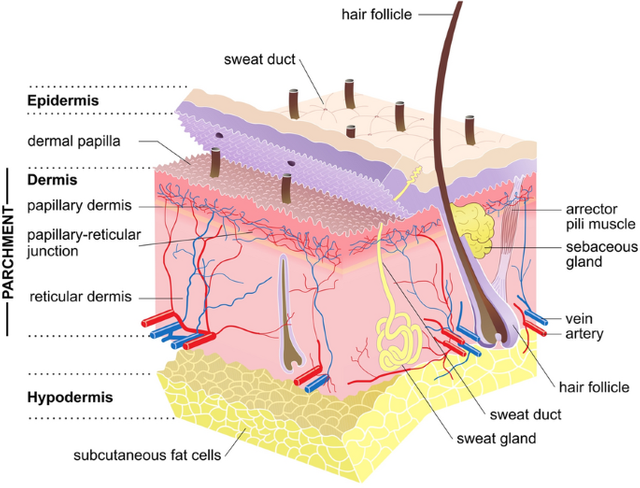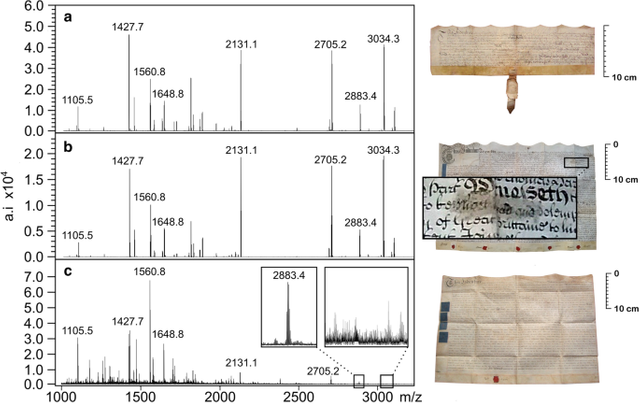According to a new research, medieval lawyers preferred to write legal documents on sheepskin parchment rather than goatskin or calfskin to prevent fraudulent activities.
It's likely that this was due to the structure of sheepskin, which made any attempts to remove or alter the text obvious. Sheep store fat in the spaces between their skin's layers. The skin is immersed in lime during parchment production, which draws out the fat and leaves voids between the layers. Attempts to scrape off the ink would cause these layers to detach, resulting in a noticeable blemish that would illustrate any attempts to alter the writing.
Sheepskin has a high fat content, ranging from 30-50%, compared to 3-10% in goatskin and just 2-3% in cattle. As a result, sheepskin has a much higher potential for scratching to detach these layers than other animals' hides. Sheepskin's continued use over goat or calfskin in later centuries was most likely due to their greater supply and lower cost.

[Structure of sheepskin] Source
Academics from the University of Exeter, as well as the Universities of York and Cambridge, worked on the research project.
Sheepskin may have been used as an anti-fraud device, according to surviving texts. The text "Dialogus de Scaccario" written in the 12th century by Richard FitzNeal, Lord Treasurer during the reigns of Henry II and Richard I recommends using sheepskin for royal documents as those are difficult to erasure without leaving any spot. When paper was popular in the 17th century, Chief Justice Sir Edward Coke suggested that legal documents must be written on parchment to avoid alterations or corruption.
[This is actually a cross post. Main Post Link]
Thank you for reading my post
@remlaps @steemcurator01 @steemcurator02

